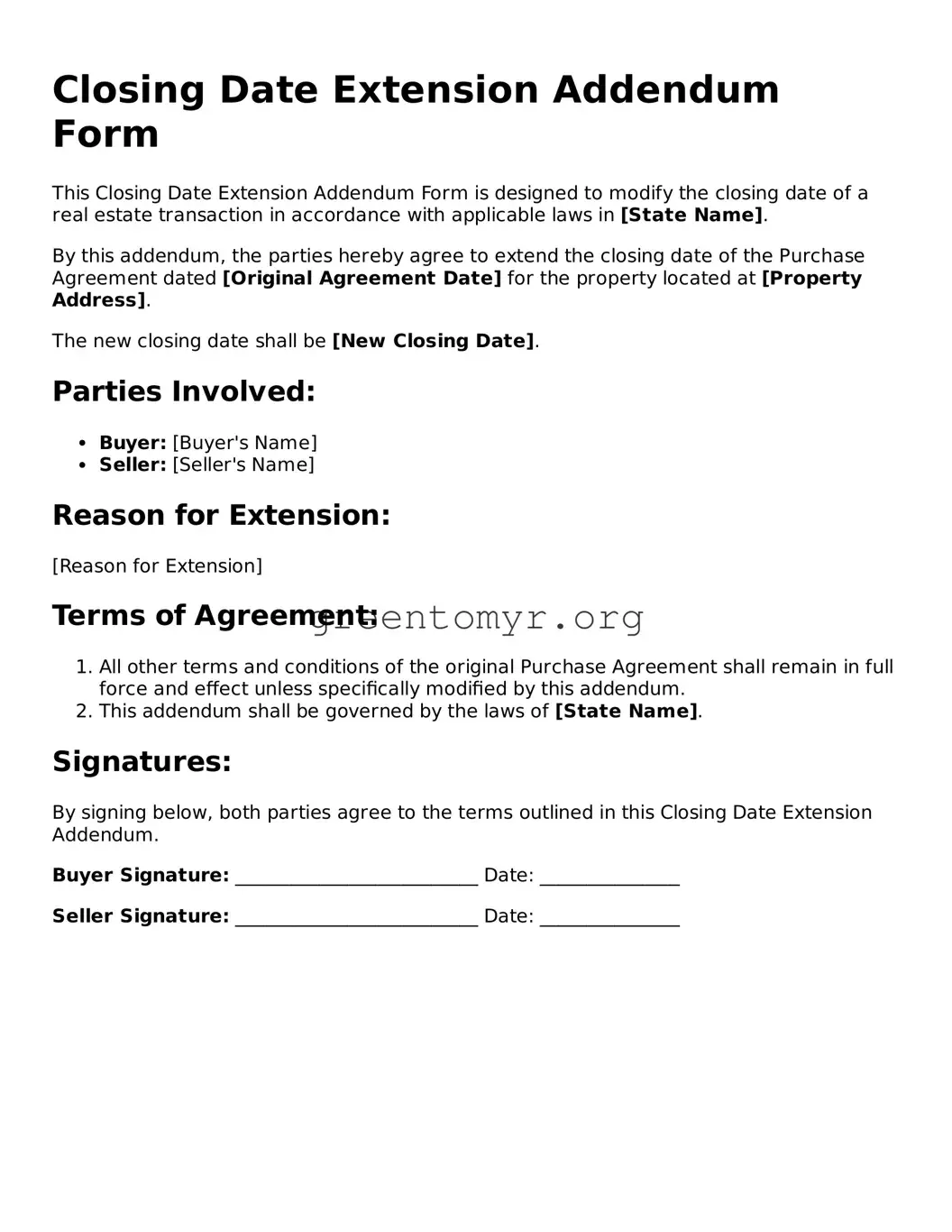The Closing Date Extension Addendum Form is a document that allows parties involved in a real estate transaction to formally extend the original closing date. This extension can be crucial when unforeseen circumstances arise, ensuring both buyers and sellers have enough time to finalize details.
This form should be used when either the buyer or seller needs additional time before closing. Situations that may warrant an extension include:
-
Delays in financing.
-
Issues with inspections.
-
Title problems that require resolution.
-
Changes in the buyer’s personal circumstances.
By using this form, both parties can formally agree to the new timeline.
Completing the Closing Date Extension Addendum Form is straightforward. Key steps include:
-
Populate the first section with details about the original contract, including parties' names and closing date.
-
Specify the new proposed closing date.
-
Have both parties sign and date the document to indicate mutual consent.
This ensures clarity and formalizes the extension agreement.
Yes, once both parties have signed the form, it becomes a legally binding agreement, modifying the original purchase contract. It’s essential to ensure that everyone involved understands and agrees to the terms outlined in the addendum.
Can I extend the closing date multiple times?
Yes, extensions can occur more than once. Each time, use a new Closing Date Extension Addendum Form. However, frequent extensions could raise concerns and may indicate issues that need addressing before proceeding. It’s best to communicate openly with all parties involved.
While it's possible to create the Closing Date Extension Addendum Form without a lawyer, consulting one can be beneficial. A legal professional can help ensure that all terms are clear and protect your interests in the transaction.
What happens if the closing date is missed without an extension?
If the closing date is missed and no extension has been agreed upon, it can lead to complications. The parties may face potential penalties or even risk the cancellation of the contract. It’s wise to formalize an extension before the closing date passes.
Typically, you will submit the signed addendum to the title company or escrow officer handling the closing. Ensure that all parties involved receive a copy for their records. It’s essential for everyone to have access to the updated agreement.
What if the seller does not agree to an extension?
If the seller does not agree to an extension, the buyer will need to assess their options. They can attempt to negotiate with the seller, or they may need to consider their rights under the original contract. Engaging a legal consultant can provide guidance on how to navigate the situation effectively.
